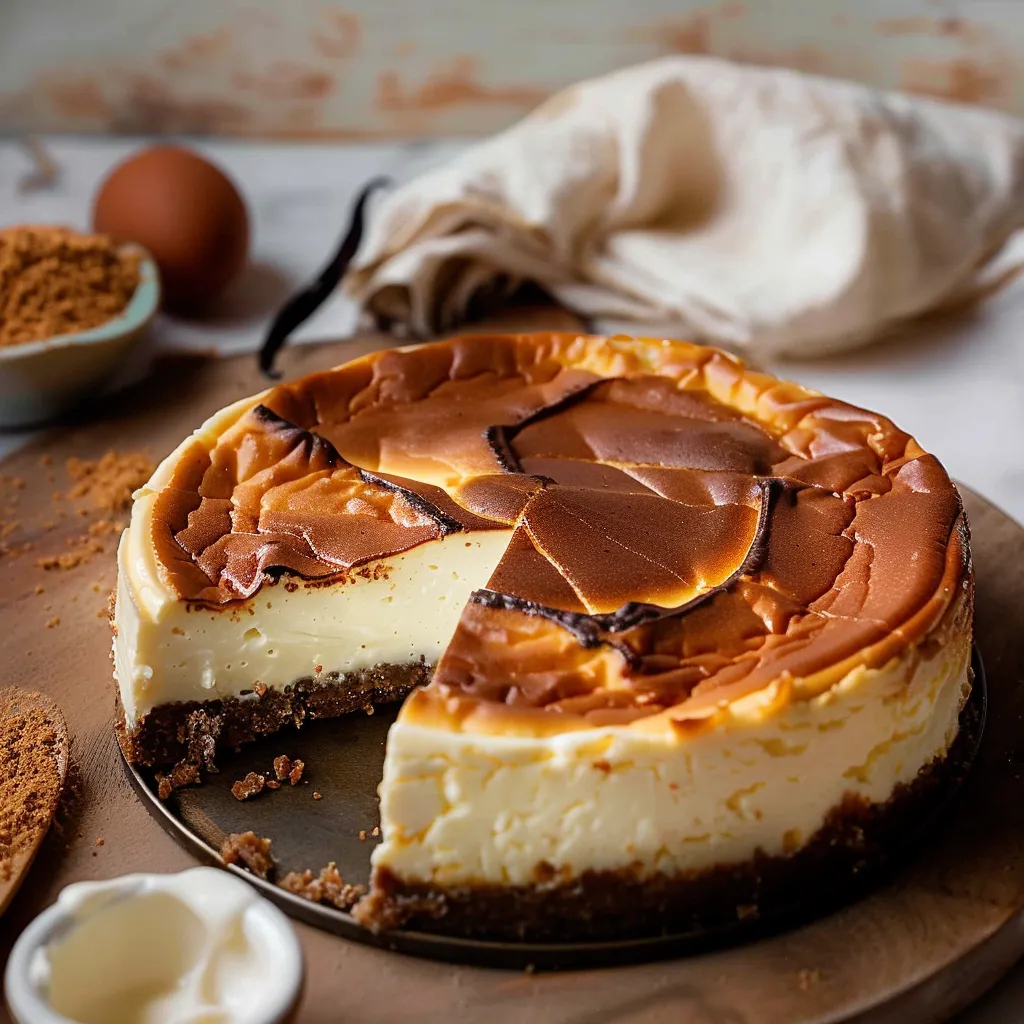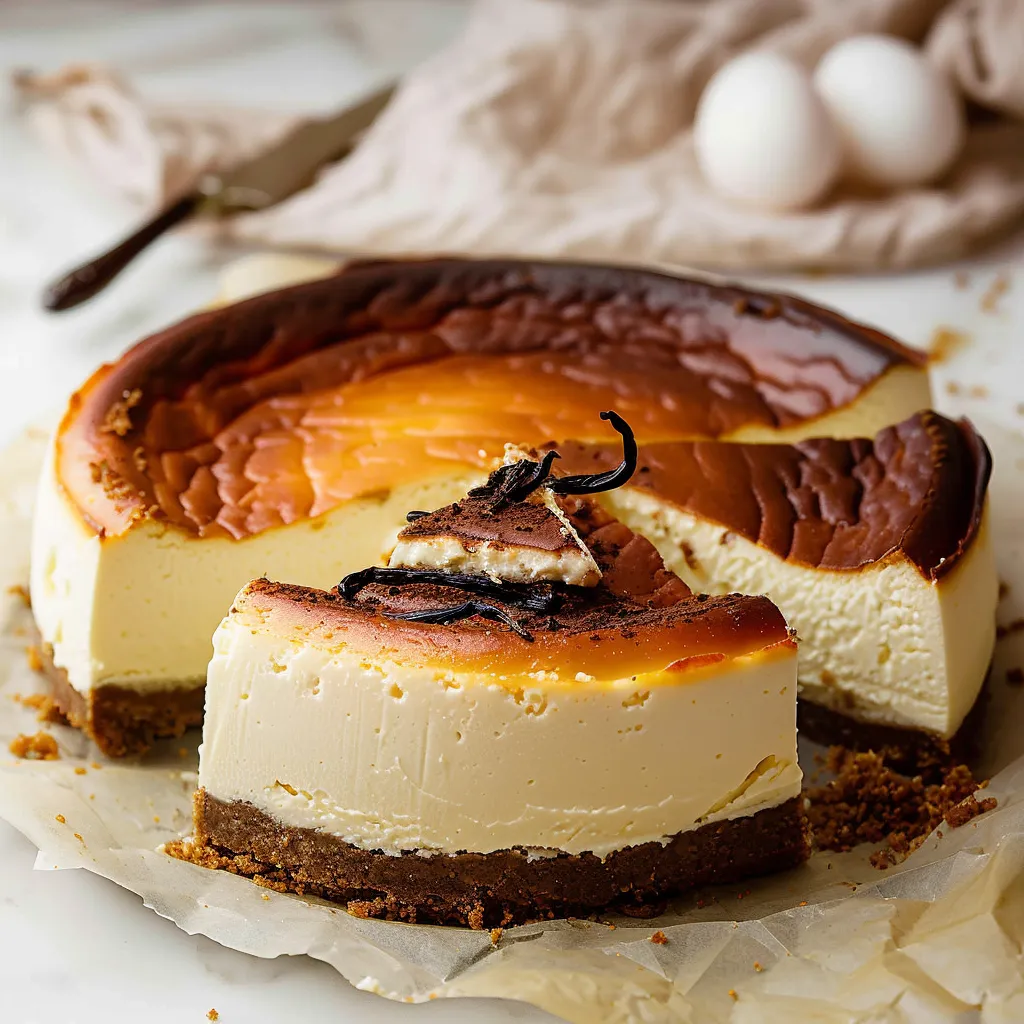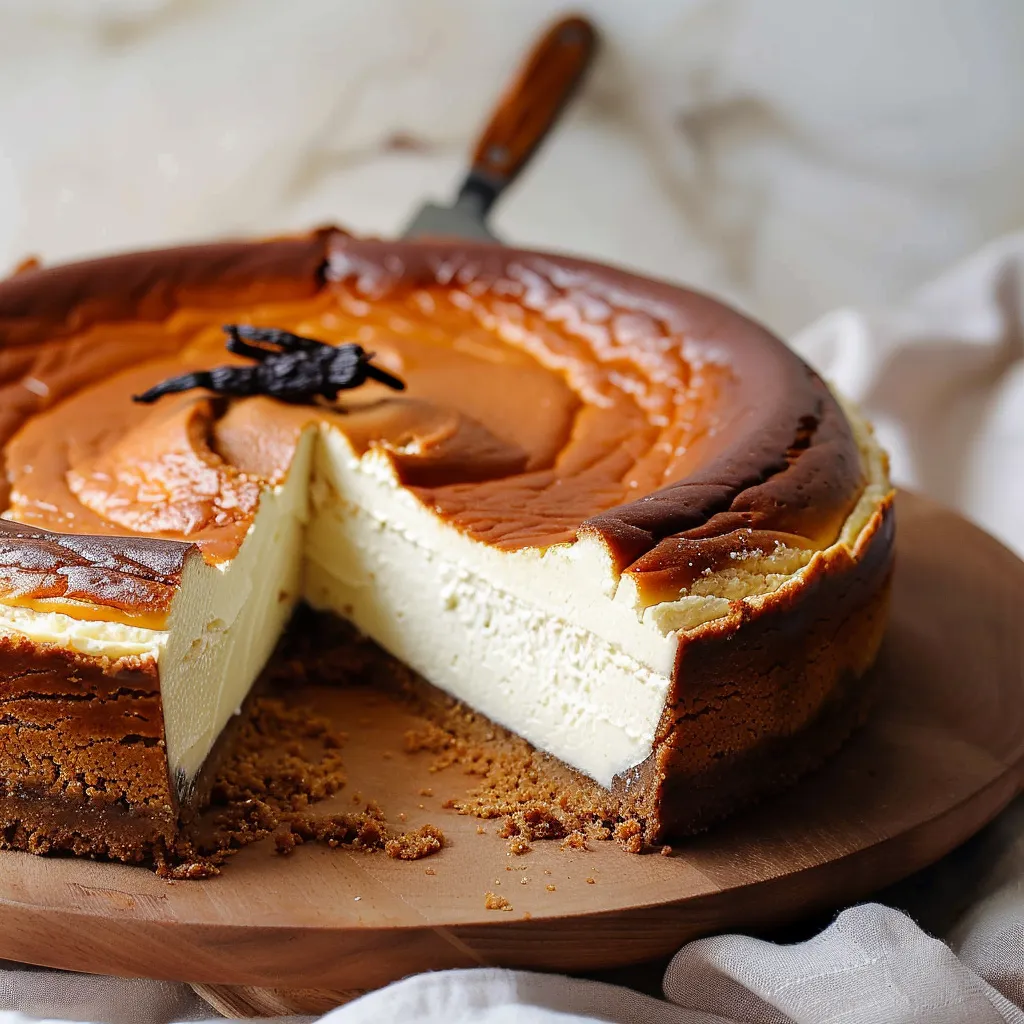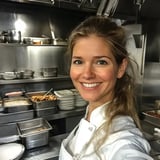 Pin it
Pin it
In the heart of Spain's Basque Country, a cheesecake revolution began that would captivate dessert lovers worldwide. The San Sebastian Cheesecake defies traditional expectations with its deliberately scorched top and impossibly creamy center. This is not your typical cheesecake - it's a celebration of contrasts where a caramelized exterior gives way to a custardy heart that practically melts on your tongue.
My first attempt at this cheesecake was a revelation. After years of carefully preventing my cheesecakes from browning, here was a recipe that celebrated those dark, flavorful edges. Now it's become my signature dessert, requested at every special occasion.
Essential Ingredients Guide
- Cream cheese: Full-fat, room temperature blocks create the smoothest texture without any graininess
- Heavy cream: The high fat content ensures that perfect custard-like center
- Farm-fresh eggs: Their quality directly affects the richness and color of your cheesecake
- Pure vanilla: Real vanilla beans or paste add depth that extract can't match
- Castor sugar: Dissolves more readily than granulated, creating a silkier texture
Creating Basque Perfection
- Pan Preparation:
- Line your springform with two overlapping sheets of parchment, pressing them into the corners. The paper should extend well above the pan's edges to contain the rising batter.
- Temperature Management:
- Ensure all ingredients are precisely at room temperature. Even slightly cool cream cheese can create lumps that mar your cheesecake's silky texture.
- Batter Development:
- Beat cream cheese until absolutely smooth before adding any other ingredients. This patience at the beginning prevents texture issues later.
- Sugar Integration:
- Add sugar gradually while beating continuously. The mixture should become lighter in color and slightly fluffier.
- Egg Addition:
- Incorporate eggs one at a time, mixing just until each disappears. Overbeating at this stage can affect the final texture.
- Final Assembly:
- Pour the batter into your prepared pan through a fine-mesh sieve to ensure the smoothest possible texture.
 Pin it
Pin it
In my journey to master this recipe, I discovered that embracing imperfection leads to perfection. Each time the cheesecake emerges from the oven with its uniquely burnt top and quivering center, I'm reminded of the rustic bakery in San Sebastian where it was born.
Temperature Secrets
The high heat is crucial for developing that characteristic burnt top while maintaining the creamy center. Your oven must be thoroughly preheated, and the rack positioned in the upper third for optimal caramelization.
Make-Ahead Magic
This cheesecake actually improves with time, making it perfect for advance preparation. The flavors deepen and the texture becomes even silkier after 24 hours in the refrigerator.
Serving Solutions
While traditional Basque serving is at room temperature, I've found that chilling for at least 4 hours and then letting it sit out for 30 minutes before serving achieves the perfect consistency.
Storage Wisdom
Keep the cheesecake in its parchment paper when refrigerating - it helps maintain moisture balance. Store in an airtight container for up to five days, though it rarely lasts that long.
 Pin it
Pin it
After countless versions of this remarkable dessert, I've learned that its beauty lies in its seeming contradictions - burnt yet creamy, simple yet sophisticated, rustic yet elegant. This San Sebastian Cheesecake proves that sometimes the most impressive desserts come from embracing what traditionally might be considered mistakes. It's not just a dessert; it's a testament to the beauty of breaking rules.
Frequently Asked Questions
- → Why must ingredients be at room temperature?
- Room temperature ingredients blend more smoothly, preventing lumps and ensuring a silky-smooth texture in the final cheesecake.
- → Can I use a different size pan?
- Stick to the 8-inch pan size, as changing it will affect baking time and height. The tall sides are crucial for the signature look.
- → Why does it need to cool so long?
- The 4-hour cooling time allows the cheesecake to set properly and develop its signature texture. Cutting too soon will result in a runny center.
- → Is it supposed to be burnt?
- Yes, the dark caramelized top is intentional and gives this cheesecake its distinctive flavor and appearance.
- → Can I make it ahead?
- Yes, it can be made up to a week ahead and stored in the refrigerator. Bring to room temperature before serving.
